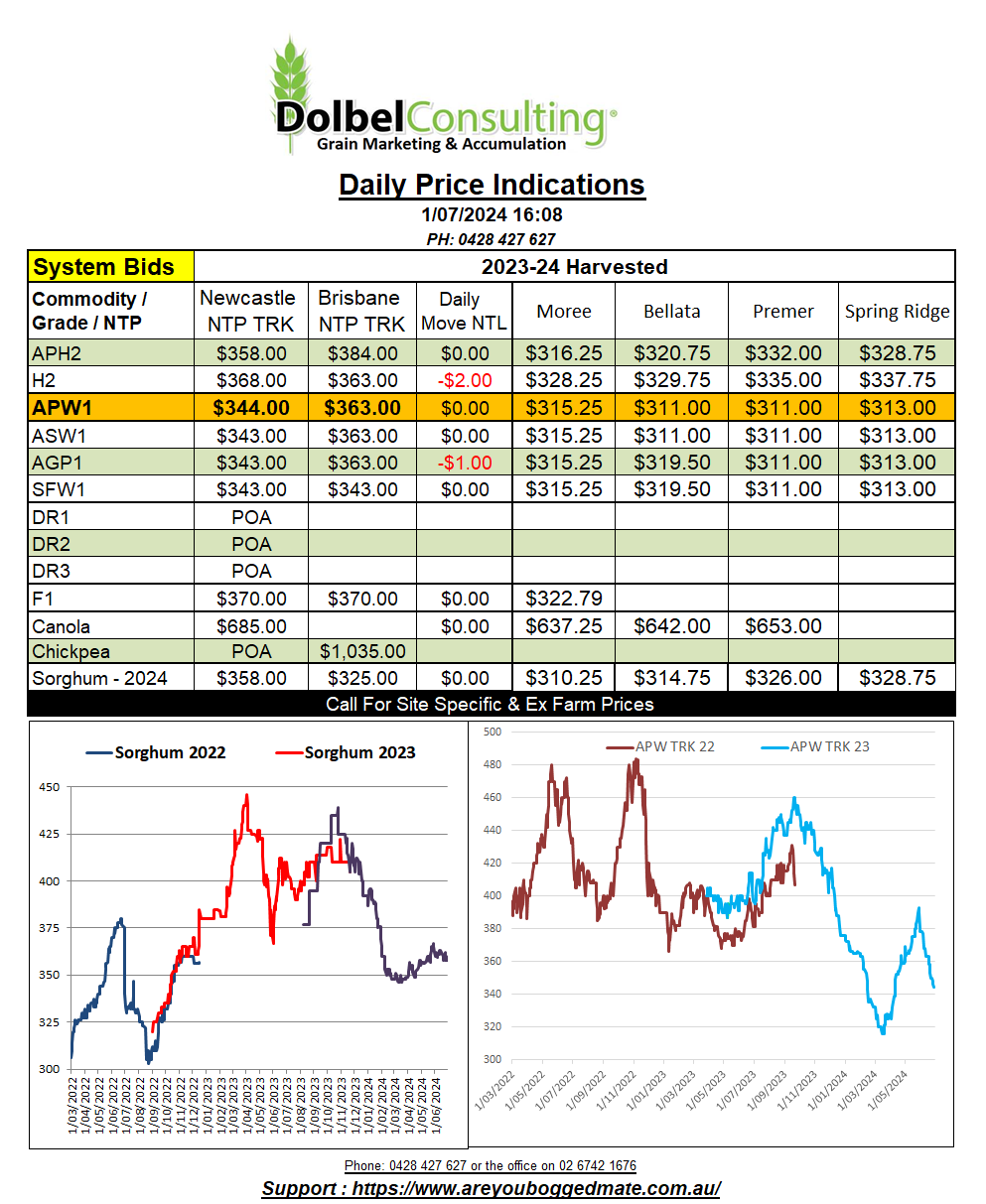1/7/24 Prices

Quality of information is what makes for good decision making. On any day I can find not only fundamental reports but technical reports on grain markets that can talk the market either up or down. Apart from the big reports, like the USDA World Ag Supply and Demand Estimate, the International Grains Councils monthly stab at world S&Ds, or the quarterly stocks reports from the USDA or StatsCanada, BOM, there’s always news articles, and official government statements, to find from different reporting agencies, like Bloomberg, Reuters and many others.
All I can say is that one should never take any of these reports as being 100% correct without first confirming the assumptions the report is using to make their claim. Everyone has the right to be wrong, that includes grain market analyst. The key is to be able to form a view on just how wrong or right these reports may be before basing a decision worth possibly hundreds of thousands of dollars on them.
You may have noticed over the last few weeks I’ve began to introduce a lot more maps and data as attachments to my morning comments. This is an attempt to outline how the market may be coming to certain determinations. It also removes the need to release lengthy monthly or quarterly market analysis reports.
USDA released their acreage report overnight. It wasn’t bullish corn, the estimate came in above the average pre-report trade estimate of 90.353mac, the USDA showing the market a number of 91.5mac. This had the obvious impact on corn futures at Chicago. Wheat area was pegged at 47.2mac by the USDA, this was actually a little lower than the average trade estimate of 47.657mac. The spillover pressure from the corn pit at Chicago was hard to ignore though, both SRWW and HRWW futures at Chicago closing in the red. Soybean acres were also lower than estimated, at 86.1mac, it was a significant difference to trade expectations but again futures struggled. Not so for canola at Winnipeg and rapeseed at Paris though, both products making nice gains for the session.
There were reports of a 55.27% increase in projected wheat production in Rio Grande do Sul, 2.6mt last year to 4.06mt this year
